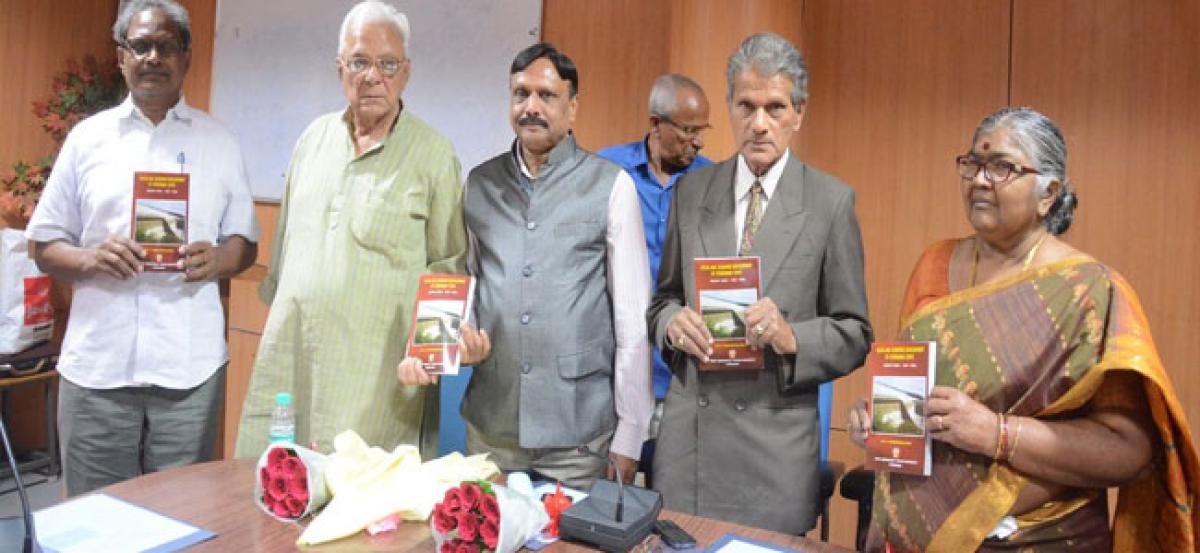Live
- Mpower’s survey on edu loans
- IIP growth falls to 3.5% in Oct
- Easing food prices lower retail inflation to 5.48% in November
- Space allocation for packaging units at MSME parks on anvil
- Maha Kumbh: Yogi reviews preparations
- Gadkari on accidents: I try to hide my face in meetings abroad
- Abetment of suicide: Mere harassment not sufficient to find accused guilty says SC
- 6.79L homes to receive water under Amrut-II
- Cops prohibit assembly of 5 or more near Group-II exam centres
- Avanthi, Grandhi quit YSRCP, lash out at Jagan
Just In

The book, ‘Social and Economic Development of Hyderabad State (Medak Suba, 1905-1950 AD) written by V Ramakrishna Reddy was launched recently at Telugu University.
The book, ‘Social and Economic Development of Hyderabad State (Medak Suba, 1905-1950 AD) written by V Ramakrishna Reddy was launched recently at Telugu University.
The writer V Ramakrishna Reddy is the former professor of history, Dr B R Ambedkar Open University. Reddy’s long career as a historian spread over more than five decades and played many roles spreading history – as a teacher, lecturer, professor, dean and researcher predominantly focused on Telangana and Hyderabad State.
It was appreciated that this book, though small in size contained a comprehensive discussion of the varied aspects of social and economic development or lack of it - of Medak Suba of the former Hyderabad State. As there are not many works on these aspects relating to Medak Suba, and it is hoped that this work would be of immense help and utility to students, researchers and scholars of Deccan and Hyderabad history.
Medak Suba, by its location, formed the heart or the nerve center of former Hyderabad State. Out of four Subas in the latter, this stood as the biggest both in terms of area and population.
It comprised during the period of study (1905-1950 AD), the four districts of Nizamabad, Medak, Nalgonda, and Mahbubnagar; though, of course, Bagath, a single taluk district of the same name and comprising crown lands around the capital city of Hyderabad, was also attached to it administratively.
This work, while critically examining the social and economic developments that characterised the reign period (1911-1948) of last Nizam, Mir Osman Ali Khan of former Hyderabad State, has juxtaposed paradoxical and conflicting situations and scenarios such as poor literacy rate of women contrasting with the fact that some of them from the toiling classes played a brave and heroic role in the Telangana Peasants’ Armed Struggle of 1946-51 and the Join Indian Union Movement (1947-48), leading to the rise of democracy from monarchy.

© 2024 Hyderabad Media House Limited/The Hans India. All rights reserved. Powered by hocalwire.com







